
François-Noël Babeuf, also known as Gracchus Babeuf, was a French proto-communist, revolutionary, and journalist of the French Revolutionary period. His newspaper Le tribun du peuple was best known for its advocacy for the poor and calling for a popular revolt against the Directory, the government of France. He was a leading advocate for democracy and the abolition of private property. He angered the authorities who were clamping down hard on their radical enemies. In spite of the efforts of his Jacobin friends to save him, Babeuf was executed for his role in the Conspiracy of the Equals.
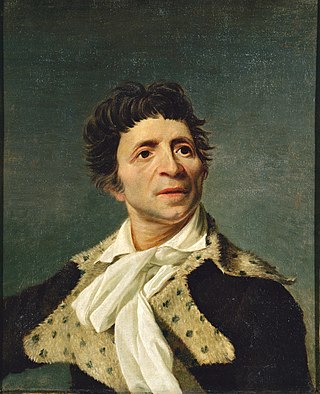
Jean-Paul Marat was a French political theorist, physician, and scientist. A journalist and politician during the French Revolution, he was a vigorous defender of the sans-culottes, a radical voice, and published his views in pamphlets, placards and newspapers. His periodical L'Ami du peuple made him an unofficial link with the radical Jacobin group that came to power after June 1793.

The University of Paris, known metonymically as the Sorbonne, was the leading university in Paris, France, from 1150 to 1970, except for 1793–1806 during the French Revolution. Emerging around 1150 as a corporation associated with the cathedral school of Paris, it was considered the second-oldest university in Europe. Officially chartered in 1200 by King Philip II and recognised in 1215 by Pope Innocent III, it was nicknamed after its theological College of Sorbonne, founded by Robert de Sorbon and chartered by King Louis IX around 1257.

Jean Sylvain Bailly was a French astronomer, mathematician, freemason, and political leader of the early part of the French Revolution. He presided over the Tennis Court Oath, served as the mayor of Paris from 1789 to 1791, and was ultimately guillotined during the Reign of Terror.

Jacques Necker was a Genevan banker and statesman who served as finance minister for Louis XVI. He was a reformer, but his innovations sometimes caused great discontent. Necker was a constitutional monarchist, a political economist, and a moralist, who wrote a severe critique of the new principle of equality before the law.

The Society of the Friends of the Constitution, renamed the Society of the Jacobins, Friends of Freedom and Equality after 1792 and commonly known as the Jacobin Club or simply the Jacobins, was the most influential political club during the French Revolution of 1789. The period of its political ascendancy includes the Reign of Terror, during which well over 10,000 people were put on trial and executed in France, many for political crimes.

Jacques-Nicolas Billaud-Varenne, also known as Jean Nicolas or by his nicknames, the Righteous Patriot or the Tiger, was a French lawyer and a major figure in the French Revolution. A close associate of Georges Danton and Maximilien Robespierre, he was one of the most militant members of the Committee of Public Safety, and is often considered a key architect of the Reign of Terror.
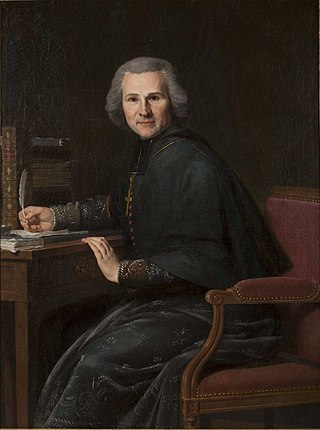
Henri Jean-Baptiste Grégoire, often referred to as the Abbé Grégoire, was a French Catholic priest, constitutional bishop of Blois and a revolutionary leader. He was an ardent slavery abolitionist and supporter of universal suffrage. He was a founding member of the Bureau des longitudes, the Institut de France, and the Conservatoire national des arts et métiers.

Jean-Lambert Tallien was a French politician of the revolutionary period. Though initially an active agent of the Reign of Terror, he eventually clashed with its leader, Maximilien Robespierre, and is best known as one of the key figures of the Thermidorian Reaction that led to the fall of Robespierre and the end of the Terror.
The Law of Suspects was a decree passed by the French National Convention on 17 September 1793, during the French Revolution. Some historians consider this decree the start of the Reign of Terror; they argue that the decree marked a significant weakening of individual freedoms that led to "revolutionary paranoia" that swept the nation.
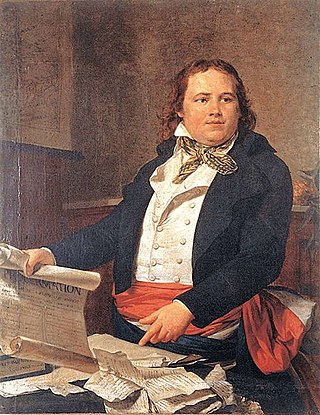
Léger-Félicité Sonthonax was a French abolitionist and Jacobin before joining the Girondist party, which emerged in 1791. During the French Revolution, he controlled 7,000 French troops in Saint-Domingue during part of the Haitian Revolution. His official title was Civil Commissioner. From September 1792, he and Polverel became the de facto rulers of Saint-Domingue's non-slave population. Because they were associated with Brissot’s party, they were put in accusation by the convention on July 16, 1793, but a ship to bring them back in France didn’t arrive in the colony until June 1794, and they arrived in France in the time of the downfall of Robespierre. They had a fair trial in 1795 and were acquitted of the charges the white colonists brought against them. Sonthonax believed that Saint-Domingue's whites were royalists or separatists, so he attacked the military power of the white settlers and by doing so alienated the colonial settlers from their government. Many gens de couleur asserted that they could form the military backbone of Saint-Domingue if they were given rights, but Sonthonax rejected this view as outdated in the wake of the August 1791 slave uprising. He believed that Saint-Domingue would need ex-slave soldiers among the ranks of the colonial army if it was to survive. In August 1793, he proclaimed freedom for all slaves in the north province. His critics allege that he was forced into ending slavery in order to maintain his own power.

The Revolutionary Tribunal was a court instituted by the National Convention during the French Revolution for the trial of political offenders. In October 1793, it became one of the most powerful engines of the period often called the Reign of Terror.
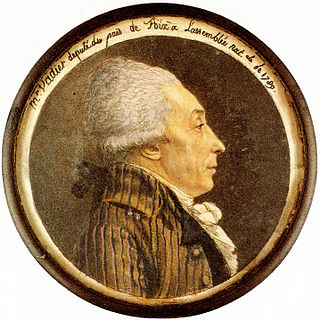
Marc-Guillaume Alexis Vadier was a major French politician of the French Revolution. He is sometimes called the "Great Inquisitor", for his active participation in the Reign of Terror.
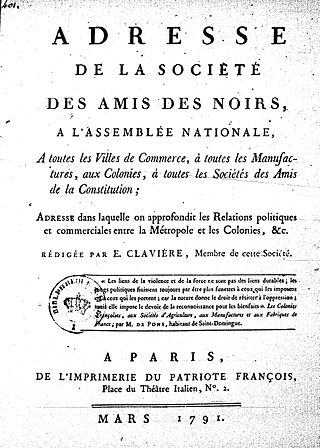
The Society of the Friends of the Blacks was a French abolitionist society founded by Jacques Pierre Brissot and Étienne Clavière and directly inspired by the Society for Effecting the Abolition of the Slave Trade founded in London in 1787. The society's aim was to abolish both the institution of slavery in the France's overseas colonies and French involvement in the Atlantic slave trade.
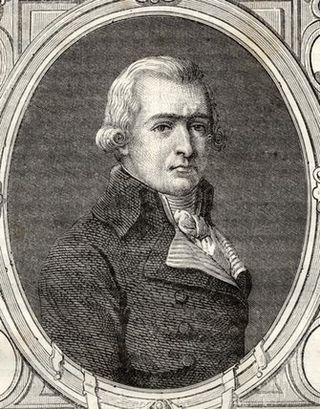
Jean-Pierre-André Amar or Jean-Baptiste-André Amar was a French political figure of the Revolution and Freemason.

The Service d'ordre légionnaire was a collaborationist militia created by Joseph Darnand, a far right veteran from the First World War. It was granted its independence in January 1943, after Operation Torch and the German occupation of the South Zone, until then dubbed "Free Zone" and controlled by Vichy. Pierre Laval himself passed the law which accorded the SOL its independence and transformed it into the Milice, which participated in battles alongside the Nazis against the Resistance and committed numerous war crimes against civilians. After the Liberation, some members of the Milice escaped to Germany, where they joined the ranks of the SS. Those who stayed behind in France faced either drumhead courts-martial, generally followed by summary execution, or simple lynching at the hands of résistants and enraged civilians.

Louis Charles Antoine Desaix was a French general and military leader during the French Revolutionary Wars. According to the usage of the time, he took the name Louis Charles Antoine Desaix de Veygoux. He was considered one of the greatest generals of the Revolutionary Wars.

Antoine Jean Galiot Mandat, known as the Marquis de Mandat, was a French nobleman, general and politician. A knight and lord of Berny-en-Santerre and Les Pins in the Vendômois, he became a colonel in the Gardes-Françaises, then succeeded La Fayette as commander of the National Guard in 1792. He was assassinated by insurgents in the insurrection of 10 August during the French Revolution.

Maximilien François Marie Isidore de Robespierre was a French lawyer and statesman, widely recognized as one of the most influential and controversial figures of the French Revolution. Robespierre fervently campaigned for the voting rights of all men and their unimpeded admission to the National Guard. Additionally, he advocated for the right to petition, the right to bear arms in self-defence, and the abolition of the Atlantic slave trade. He was a radical Jacobin leader who came to prominence as a member of the Committee of Public Safety, an administrative body of the First French Republic. His legacy has been heavily influenced by his actual or perceived participation in repression of the Revolution's opponents, but is notable for his progressive views for the time.
The revolt of Lyon against the National Convention was a counter-revolutionary movement in the city of Lyon during the time of the French Revolution. It was a revolt of moderates against the more radical National Convention, the third government during the French Revolution. It broke out in June 1793 and was put down in October of the same year, after government forces had besieged the city.


















